Submitted by WA Contents
The Türkiye Pavilion will explore the stories of "abandoned buildings" at Venice Biennale
Turkey Architecture News - Apr 13, 2023 - 16:09 2869 views
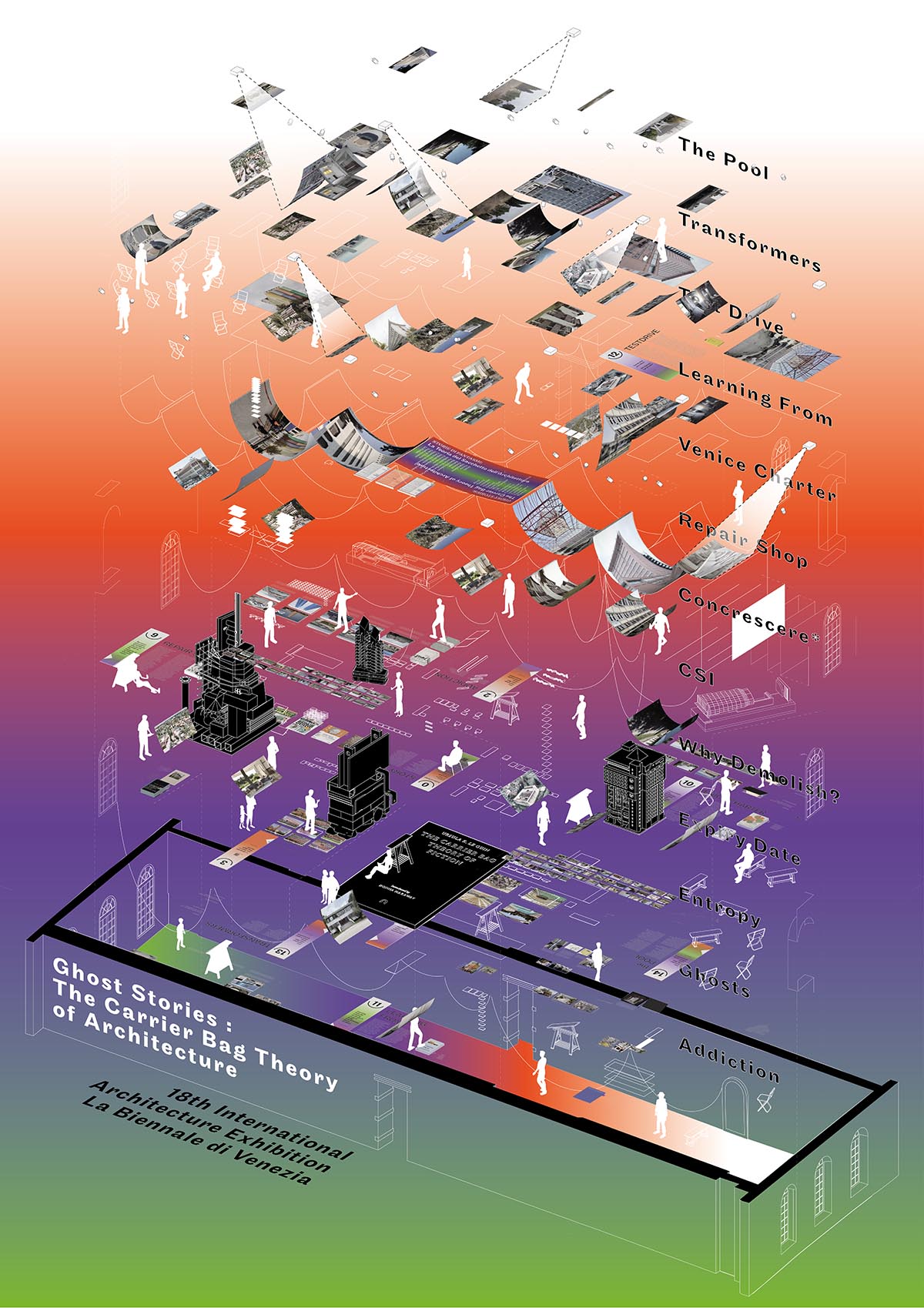
The Türkiye Pavilion has released details about its theme and exhibition that will be presented at the 18th International Architecture Exhibition of Venice Architecture Biennale 2023.
Themed Ghost Stories: The Carrier Bag Theory of Architecture, the exhibition, curated by Istanbul-based practice SO? co-founders Sevince Bayrak and Oral Göktaş, will expore, understand and delve into the "stories of abandoned buildings, rather than focusing on more heroic, successful examples of built environment."
The Türkiye Pavilion, coordinated by the Istanbul Foundation for Culture and Arts (IKSV), the exhibition will open to the public on 20 May and will be on view until 26 November 2023.
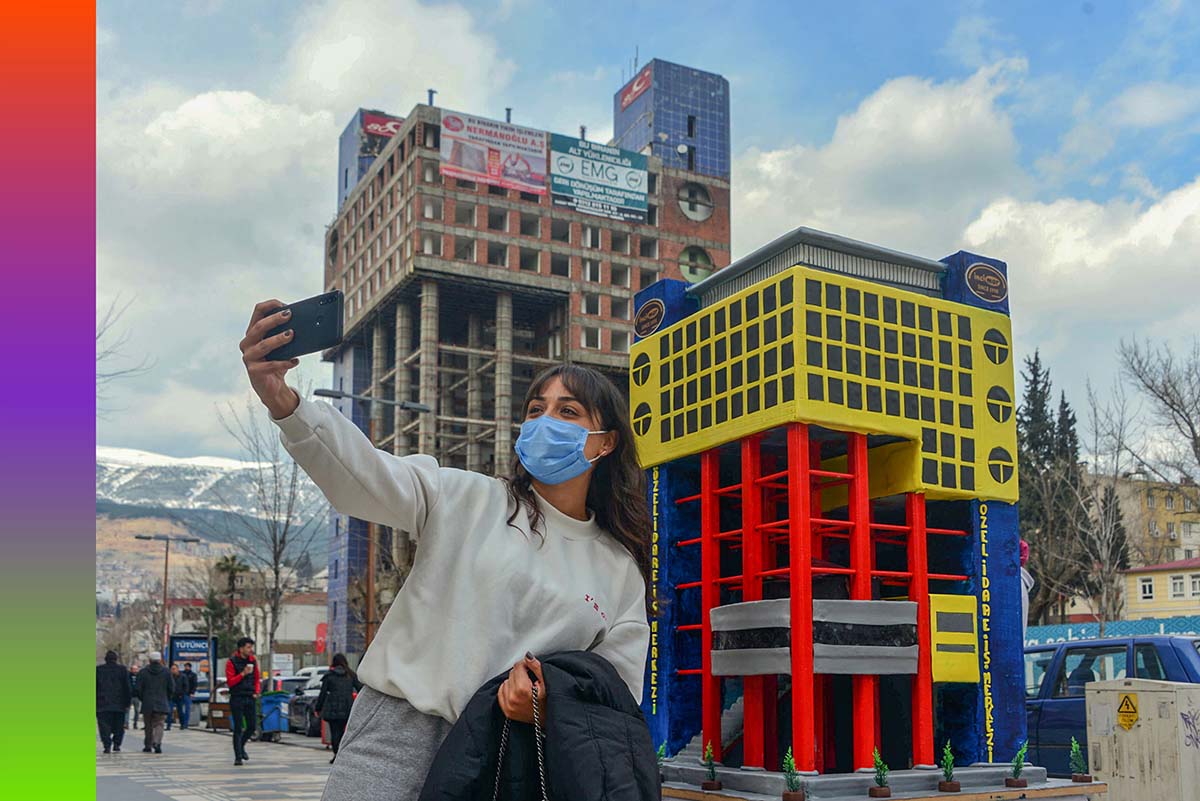
Reference image. Image courtesy of IKSV
Alongside the curators Sevince Bayrak and Oral Göktaş, the project team consists of Aysima Akın, Kevser Reyyan Doğan, Merve Akdoğan and the research team includes Taylan Tosun, Doğu Tonkur, Hatice Bahar Çoklar Berke Şevketoğlu, Duygu Sayğı. Exhibition design is by SO? Architecture and Ideas, the graphic design is by Esen Karol and the web developer is Özhan Binici.
The exhibition aims to question the accepted perceptions of and approaches to buildings across Türkiye, to reveal more hopeful proposals for the future.
Taking cues from Elizabeth Fisher’s Carrier Bag Theory of Evolution, the curators stated that the theory argues that, "rather than hunting tools, the first cultural device used by humans was probably a carrier bag, which allowed them to transport the vegetables they gathered."
Besides Fisher’s Carrier Bag Theory of Evolution, the curators also drew attention to Ursula K. Le Guin’s 1986 essay, titled The Carrier Bag Theory of Fiction, adding that Le Guin "expanded this idea, moving away from the notion of the weapon-wielding hero."
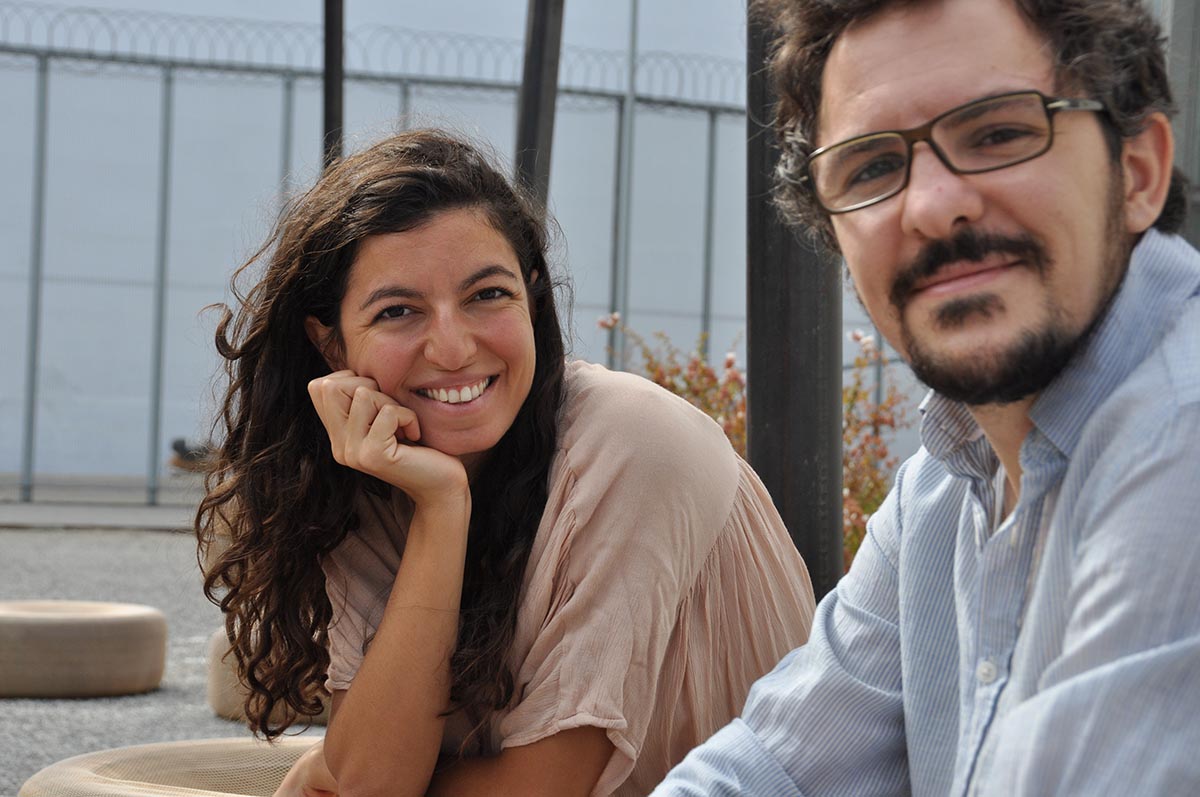
Sevince Bayrak and Oral Göktaş, courtesy of IKSV
"The adaption of carrier bag theories, from evolution to architecture, brings a radical change to the images we have inherited, whether through the paintings on the walls of prehistoric caves, in stories, or in the modern cityscape," said the curators Sevince Bayrak and Oral Göktaş.
"When these images start to change, this requires a shift in our way of doing things."
"Thus the shift from focusing on the image of a weapon to that of a carrier bag eventually transforms the whole scene from a heroic story of destruction to a collaborative, unfamiliar life story," they continued.
The exhibiton is derived from a comprehensive research resulted in an open call, which was launched in December 2022. The call aimed at compiling recent documentation of unused buildings across Türkiye.
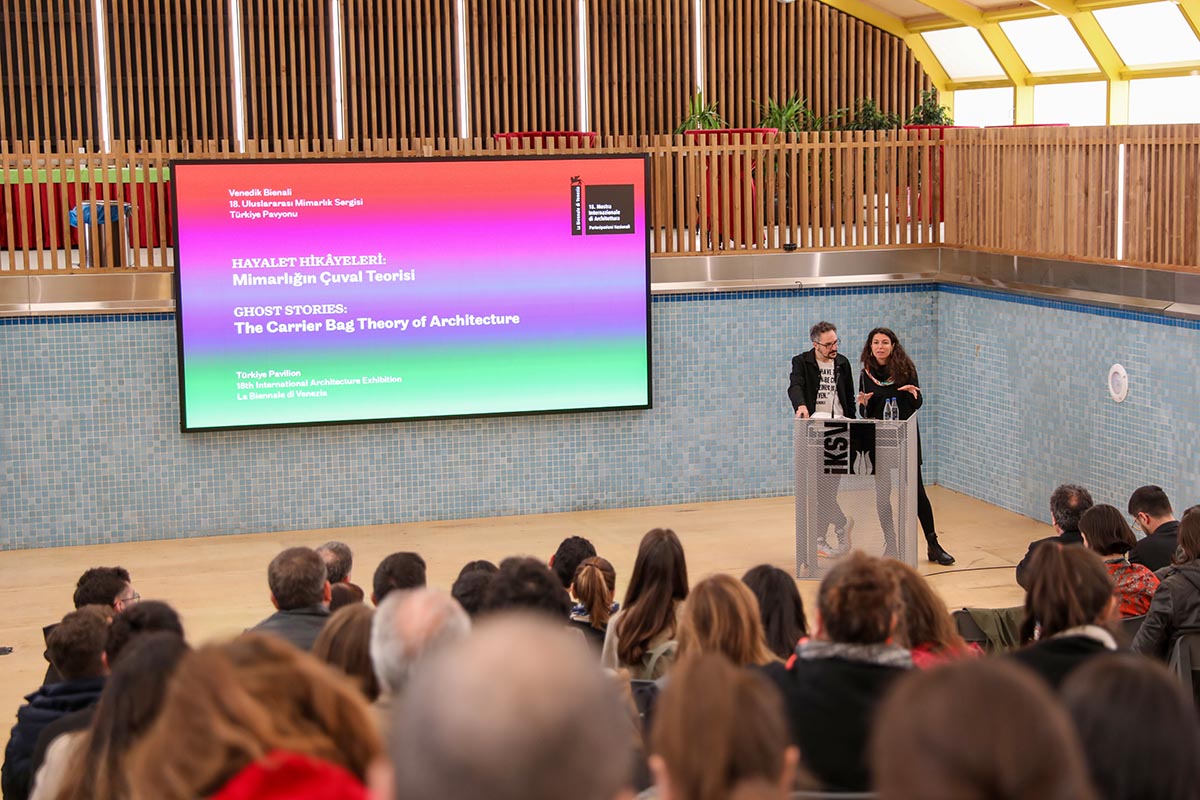
From press conference. Image © Fatih Yılmaz, courtesy of IKSV
Conceived these buildings as "the laboratory of the future", in response to Lesley Lokko's theme The Laboratory of the Future, the exhibition presents "novel tools and methods" to transform rather than demolish existing structures, based on collective dreams and discussions.
Following the open call, the team comprised an archive made up of images of hundreds of residences, building complexes and abandoned production sites, partially or completely empty skyscrapers, hotels, schools, hospitals, restaurants and recreational facilities. The archive was created thanks to the responses of contributors from all over Türkiye.
"One of the focal points of the exhibition – how to reinforce and reuse existing building stock – becomes even more urgent after the devastating earthquakes in Kahramanmaraş, which affected 13.5 million people in 10 cities, leaving thousands in need of temporary housing," the curators explained.
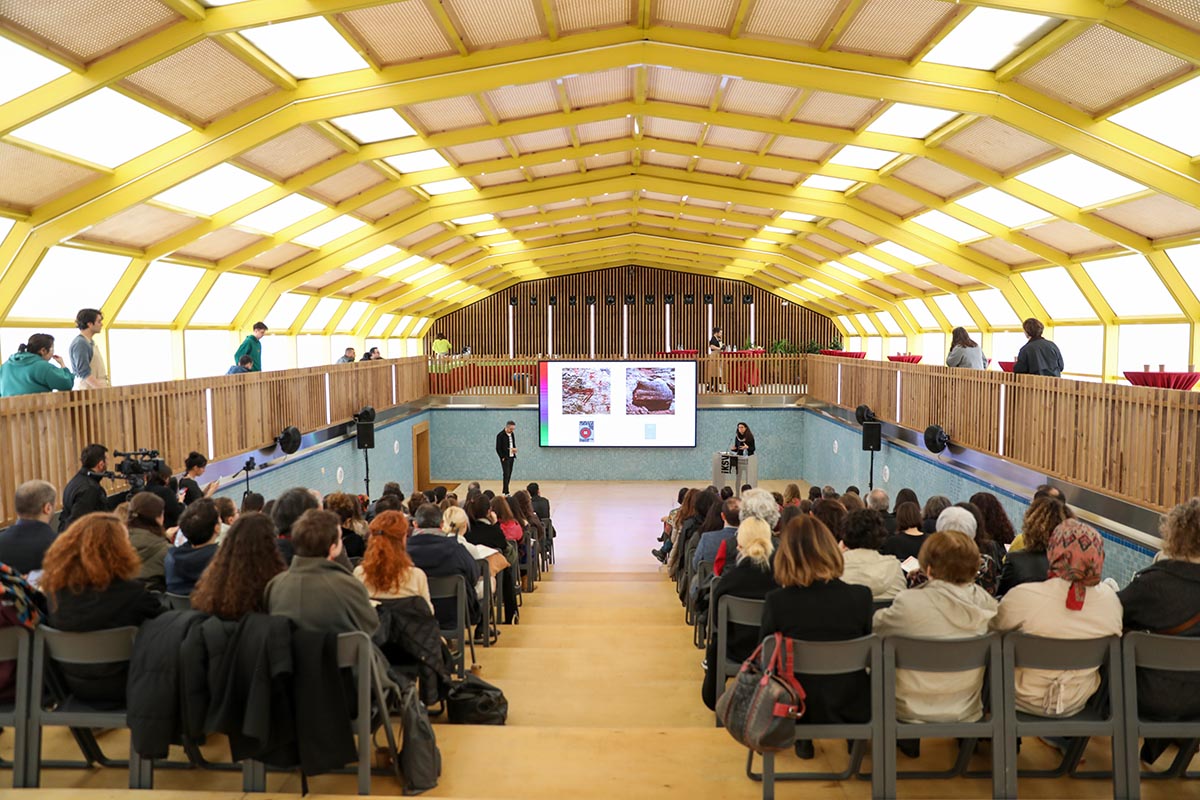
From press conference. Image © Fatih Yılmaz, courtesy of IKSV
"There is a large stock of unused buildings in Türkiye with diversified programs, and the existing building stock can be used for earthquake victims," Sevince Bayrak told WAC in an exclusive interview.
"Since construction in Türkiye is triggered by economic growth rather than spatial needs, we have a huge variety of unused buildings, from hospitals to airports," said Sevince Bayrak and Oral Göktaş.
"As we were preparing this project, two earthquakes, with magnitudes of 7.7 and 7.6, struck South-eastern Türkiye, causing massive damage."
"In a country with an enormous building stock that has to be reinforced to resist earthquakes – since it is not possible to rebuild them all – we need to find ways to transform the existing and introduce novel tools and methods to nurture our collective dreams and discussions," the curators added.
The exhibition has a dual setup, referring to its title. The first section, called Ghost Stories, will show examples of unused buildings in Türkiye with various functions in “The Cloud”.
The second section, named the Carrier Bag Theory of Architecture, will be positioned as a colourful “Workbench", aiming to transform this real but idle painting into a storehouse of hope for the future of cities.
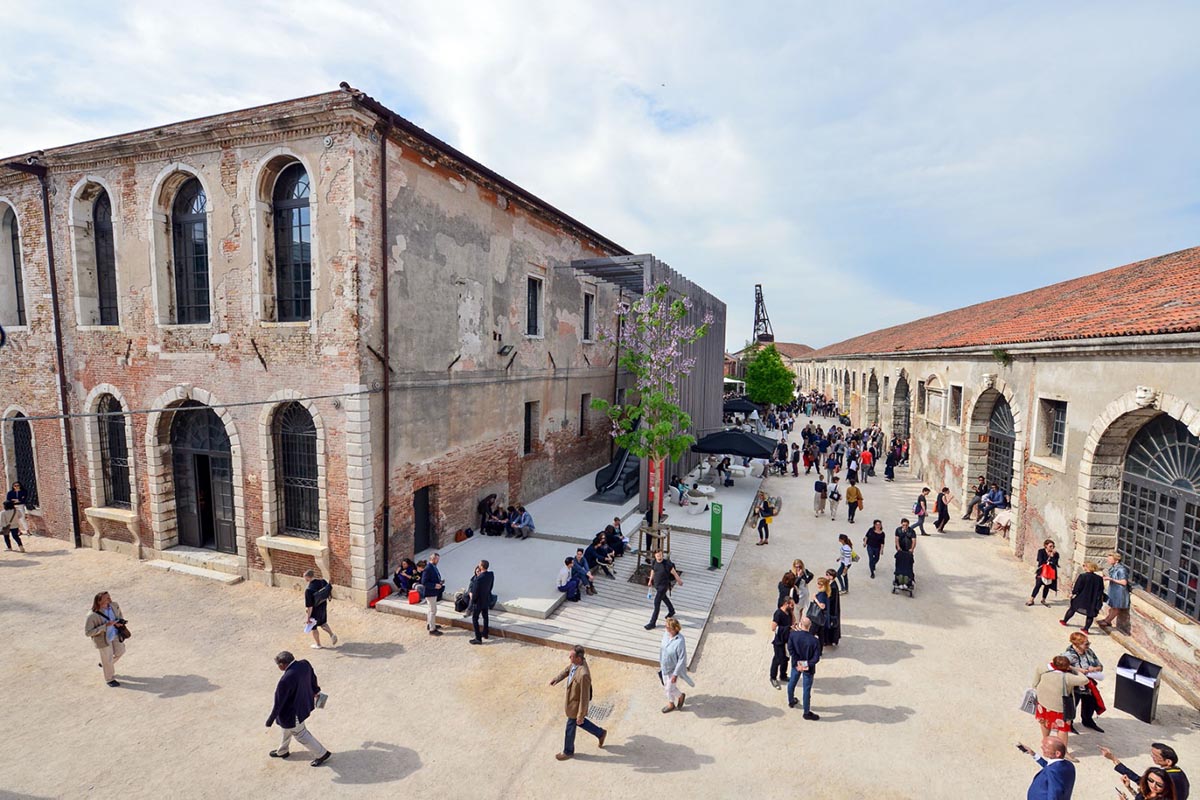
Arsenale area. Image © Andrea Avezzu, courtesy of La Biennale di Venezia
A manifesto will be displayed in the workbench area, intending to initiate discussions on how existing structures can be transformed under 15 different titles.
The Manifesto is presented with 15 tables in the workbench area: Story, Theory, Addiction, Ghosts, Entropy, Expiry Date, Why Demolish?, CSI, Concrescere, Repair Shop, Venice Charter – Revisited, Learning From, Test Drive, Transformers, The Pool.
In addition to the exhibition, the curators are preparing a book that develops the research process, reveals findings of the exhibition and aims to involve architects and architecture students in the discussions it raises.
Written by Sevince Bayrak and designed by Esen Karol, the book will be available in English and co-published by Istanbul Foundation for Culture and Arts (IKSV) and ListLab.
The Venice Architecture Biennale 2023 will take place from Saturday 20 May to Sunday 26 November, 2023 at the Arsenale and Giardini venues.
Several pavilions announced their themes and details for the 2023 Venice Architecture Biennale, such as Gabriela De Matos and Paulo Tavares were announced as the curators of the Brazilian Pavilion, the Danish Pavilion will explore Coastal Imaginaries curated by Josephine Michau.
More recently, the Korean Pavilion announced its theme, 2086: Together How?, the Austrian Pavilion presented its theme PARTECIPAZIONE / BETEILIGUNG, the Spanish Pavilion presented its theme Foodscapes at the Venice Architecture Biennale and the Polish Pavilion will present Datament.
Top image: Reference image, courtesy of IKSV.
> via IKSV
exhibition pavilion Türkiye Pavilion Venice Architecture Biennale
